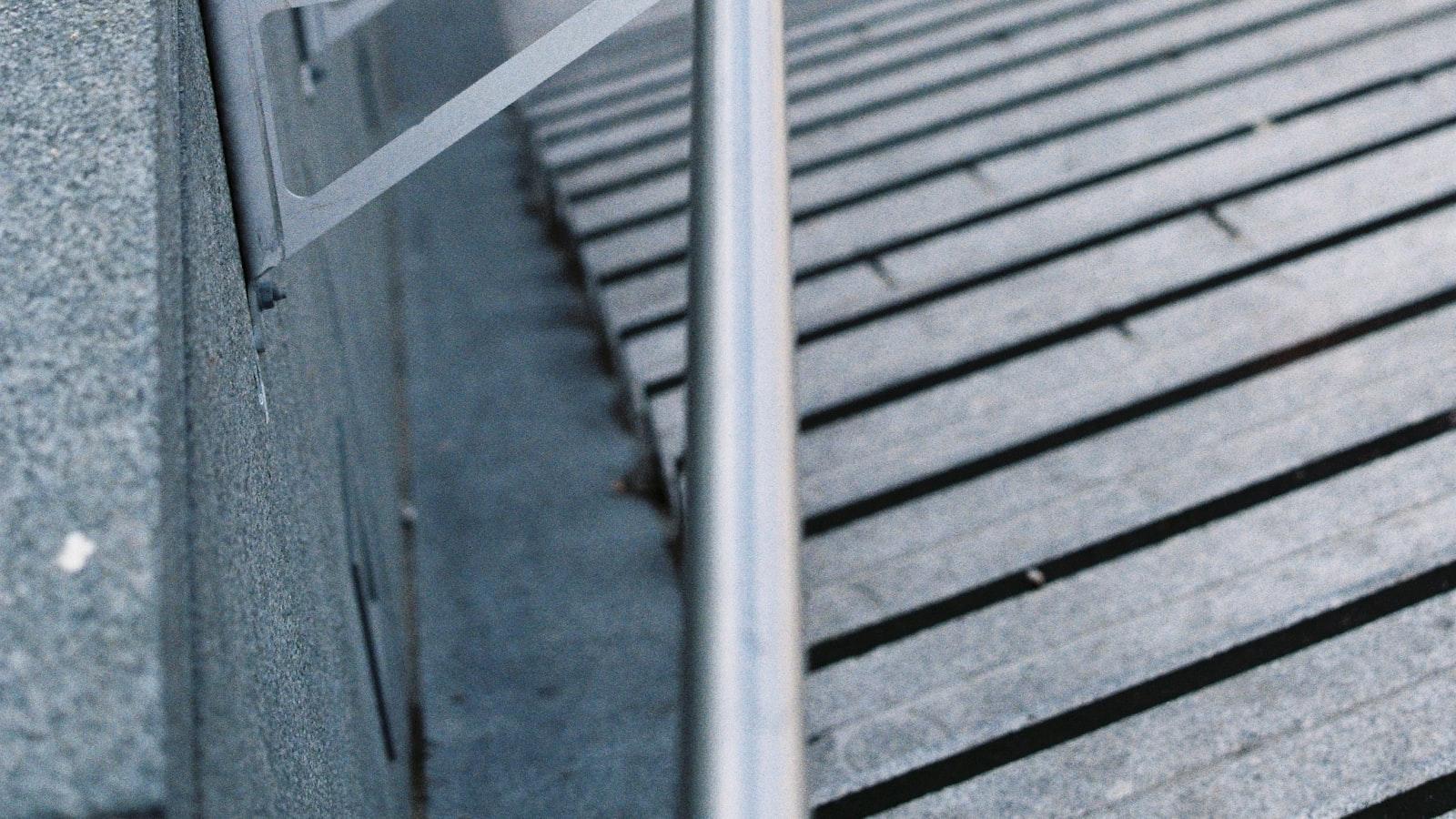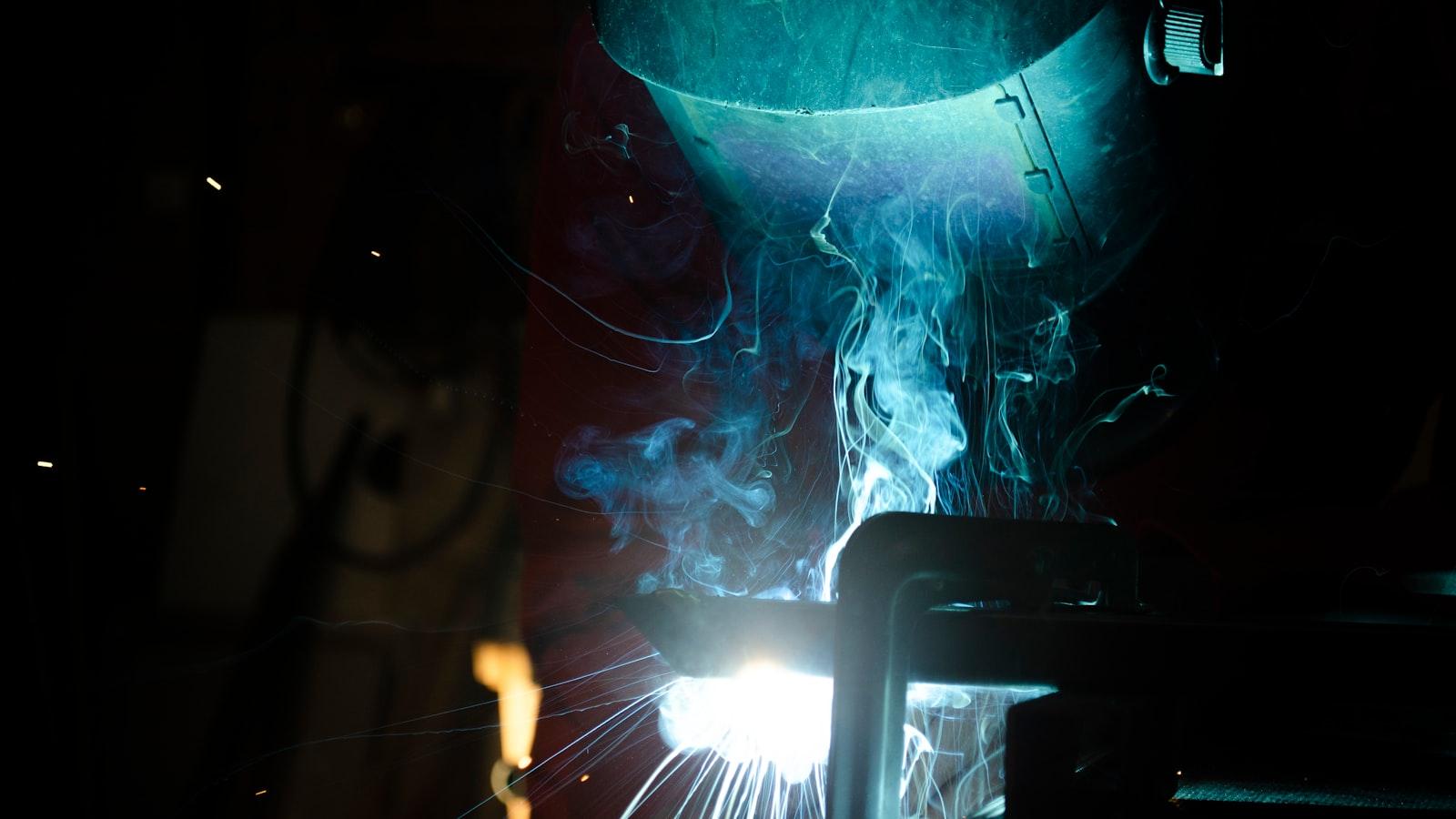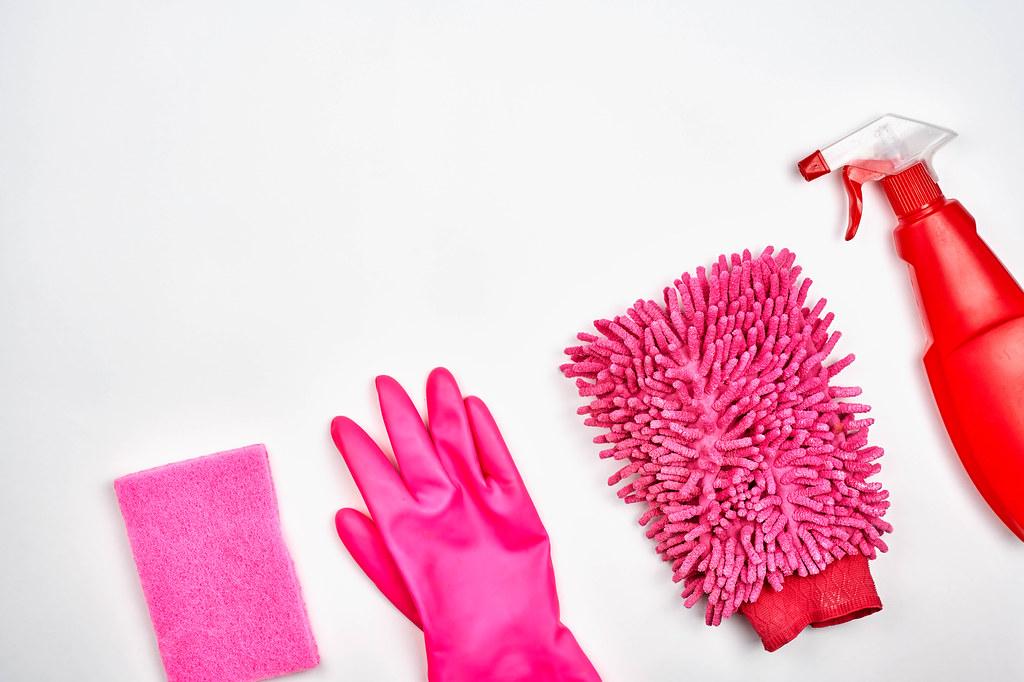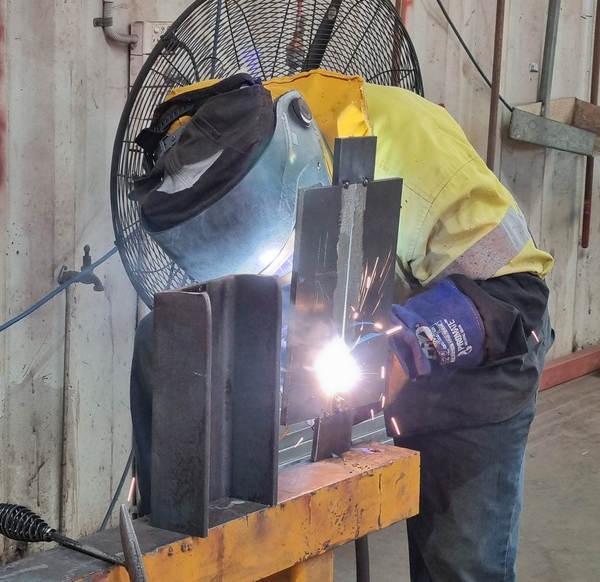Are you looking to learn how to weld aluminum? Look no further! With 13 years of welding experience under my belt, including work with “AJ & FO Welding Services” and assisting on underwater welding projects for “Texas Commercial Diving,” I am here to share with you the ins and outs of welding aluminum. Whether you are a beginner or looking to improve your skills, this article will provide you with all the information you need to successfully weld aluminum like a pro.
Table of Contents
- Selecting the Right Welding Equipment
- Preparing the Aluminum Surface for Welding
- Choosing the Appropriate Filler Metal
- Understanding the Welding Technique for Aluminum
- Ensuring Proper Ventilation and Safety Measures
- Achieving Clean and Strong Welds
- Avoiding Common Mistakes in Aluminum Welding
- Q&A
- Key Takeaways
Selecting the Right Welding Equipment

When it comes to welding aluminum, is absolutely crucial. You need to ensure that you have the appropriate tools to get the job done effectively and efficiently. Below, we have compiled a list of essential tips and advice to help you navigate the complexities of welding aluminum.
1. Choose the right welding method: Aluminum can be welded using different methods such as MIG welding, TIG welding, or stick welding. Each method has its advantages and disadvantages, so it’s important to choose the one that best suits your project.
2. Use the correct filler material: Unlike steel, aluminum requires a specific filler material for welding. Make sure to use the appropriate filler rod based on the type of aluminum you are working with to ensure a strong and durable weld.
3. Adjust your settings: Aluminum conducts heat much better than other metals, so you may need to adjust your welding machine settings accordingly. Increase the travel speed and use a higher voltage to prevent burning through the metal.
4. Clean the metal surface: Aluminum is prone to oxidation, so it’s essential to clean the metal surface thoroughly before welding. Use a stainless steel brush or a chemical cleaner to remove any dirt, oil, or oxide layers that could affect the quality of the weld.
5. Practice, practice, practice: Welding aluminum can be challenging, especially for beginners. Take the time to practice on scrap pieces of aluminum before working on your actual project. This will help you get comfortable with the welding process and improve your skills.
Preparing the Aluminum Surface for Welding

When , it is essential to follow a few key steps to ensure a successful outcome. One of the first things to do is to clean the surface thoroughly to remove any dirt, oil, or other contaminants that could interfere with the welding process. Use a degreaser and a wire brush to scrub the surface clean, paying special attention to any areas with heavy buildup. This step is absolutely crucial for achieving strong, clean welds.
After cleaning the surface, the next step is to rough up the aluminum with a wire brush or sandpaper. This helps to remove any oxidation that may have formed on the surface, which can prevent the weld from penetrating properly. Make sure to work in a well-ventilated area and wear proper safety gear, including gloves and goggles, when .
Once the surface is clean and roughed up, it is important to preheat the aluminum before welding. Preheating helps to reduce the stress on the metal and minimizes the risk of cracking during the welding process. Use a propane torch or other heating source to heat the aluminum to the recommended temperature before beginning the weld. This step is key to ensuring a strong and durable weld.
Another important aspect of is choosing the right filler metal. Different alloys require different types of filler metal, so it is essential to select the appropriate one for the job. Make sure to match the filler metal to the base metal as closely as possible to achieve the best results. Consult with a welding expert if you are unsure which filler metal to use for your specific project.
In conclusion, requires careful attention to detail and following the correct steps. By cleaning the surface, roughing it up, preheating the metal, and selecting the right filler metal, you can ensure a successful welding process and achieve strong, clean welds. Following these tips will help you to weld aluminum like a pro and create high-quality finished products.
Choosing the Appropriate Filler Metal

is crucial when it comes to welding aluminum. The right filler metal can make a significant difference in the strength and quality of your weld. Here are some important factors to consider when selecting the best filler metal for your aluminum welding project:
-
Alloy Type: Different aluminum alloys require specific filler metals to ensure a strong and durable weld. Matching the filler metal to the base metal alloy is essential for a successful weld.
-
Thickness of the Material: The thickness of the aluminum material you are welding will determine the type of filler metal you should use. Thicker materials may require a filler metal with higher strength and heat resistance.
-
Welding Technique: The welding technique you are using, whether it’s TIG, MIG, or another method, will also impact the type of filler metal you should choose. Make sure to select a filler metal that is compatible with your welding process.
-
Joint Design: The design of the joint you are welding, such as butt joint, lap joint, or T-joint, will influence the type of filler metal that is best suited for the job. Consider the joint configuration when selecting your filler metal.
-
Application: Consider the specific application of the welded aluminum part. Are you welding for structural purposes, cosmetic reasons, or another specific function? This will help determine the most suitable filler metal for your project.
By considering these factors and selecting the appropriate filler metal, you can ensure a strong, reliable, and high-quality weld for your aluminum project. Don’t underestimate the importance of choosing the right filler metal – it can make all the difference in the success of your welding job.
Understanding the Welding Technique for Aluminum

Aluminum welding can be a challenging task, but with the right techniques, it can be done efficiently. One of the most important things to remember when welding aluminum is to clean the metal surfaces thoroughly before beginning the welding process. Any dirt, oil, or other contaminants on the surface can lead to weak welds and defects.
Another crucial step in welding aluminum is to choose the correct welding technique based on the thickness of the aluminum being welded. For thinner aluminum sheets, TIG welding is often the preferred method due to its ability to create clean, precise welds. For thicker aluminum materials, MIG welding may be more suitable.
When welding aluminum, it is essential to use the appropriate filler material that is specifically designed for aluminum welding. Using the wrong filler material can lead to weak welds and potential failures. Make sure to match the filler material to the alloy of the aluminum being welded for the best results.
Preheating the aluminum can help reduce the risk of cracking and improve weld quality. However, not all aluminum alloys require preheating, so it is essential to consult with the manufacturer’s guidelines or a welding expert to determine if preheating is necessary for the specific aluminum being welded.
Lastly, practice and patience are key when it comes to welding aluminum. It may take some time to master the technique, but with dedication and persistence, you can achieve high-quality welds on aluminum materials. Remember to always follow safety precautions and seek advice from professionals if needed.
Ensuring Proper Ventilation and Safety Measures

Proper ventilation and safety measures are crucial elements to consider when welding aluminum. To ensure a safe and successful welding process, follow these tips:
-
Ventilation: Always work in a well-ventilated area or use a fume extraction system to remove harmful fumes and gases produced during the welding process. Poor ventilation can lead to serious health risks, so it is essential to prioritize this aspect of safety.
-
Personal Protective Equipment (PPE): Wear the necessary PPE, including a welding helmet, gloves, long sleeves, and closed-toe shoes. Aluminum welding produces intense heat and bright light, so protecting yourself with the right gear is paramount to prevent injuries.
-
Preparation: Clean the aluminum surface thoroughly before welding to remove any dirt, oil, or contaminants that could affect the weld quality. Proper preparation ensures a strong and durable weld that will stand the test of time.
-
Welding Technique: Use the right welding technique for aluminum, such as TIG (Tungsten Inert Gas) welding or MIG (Metal Inert Gas) welding. These techniques are specifically designed for aluminum welding and will help you achieve clean and precise welds.
-
Safety Checks: Regularly inspect your welding equipment, including the welding machine, cables, and gas cylinders, to ensure they are in good condition. Safety checks can help prevent accidents and ensure a smooth welding process.
By following these tips for welding aluminum, you can ensure proper ventilation and safety measures are in place for a successful welding project. Remember to prioritize safety at all times to protect yourself and others from potential hazards.
Achieving Clean and Strong Welds

To achieve clean and strong welds when working with aluminum, it is essential to follow the right techniques and methods. One of the key elements to consider is proper preparation before diving into the welding process. Make sure to clean the surface of the aluminum thoroughly to remove any dirt, oil, or contaminants that could affect the quality of the weld.
When it comes to choosing the right welding technique for aluminum, TIG welding is often considered the best option. TIG welding allows for greater control over the welding process, producing cleaner and stronger welds compared to other methods. Additionally, using a filler rod made of the same material as the aluminum can help ensure a seamless and durable weld.
Maintaining the correct temperature during the welding process is crucial for . Aluminum has a high melting point, so it is important to use the appropriate heat settings on your welding machine to prevent overheating or underheating the metal. This will help create a uniform weld with good penetration and strength.
Another important factor to consider when welding aluminum is using the right gas shielding. Argon is commonly used as a shielding gas for aluminum welding because it helps protect the weld from contamination and oxidation. Ensuring the proper gas flow rate and coverage over the weld area is essential for achieving high-quality results.
In conclusion, when working with aluminum requires attention to detail, proper preparation, the right welding technique, maintaining the correct temperature, and using the appropriate shielding gas. By following these tips and techniques, you can produce high-quality welds that are durable and reliable.
Avoiding Common Mistakes in Aluminum Welding

When it comes to welding aluminum, avoiding common mistakes is crucial for achieving strong and quality welds. One of the most important tips is to always clean the aluminum thoroughly before welding. Any dirt, oil, or residue on the surface can lead to weak welds or contamination. Use a stainless steel wire brush or a dedicated aluminum cleaning solution for this purpose. Take the extra time to clean the material properly – it will pay off in the long run.
Another common mistake in aluminum welding is using the wrong welding technique. Aluminum is a highly conductive metal and requires a different approach compared to steel. Use a specialized aluminum welding technique such as TIG (tungsten inert gas) welding for best results. Don’t try to apply the same technique you use for other metals – aluminum requires special attention.
Choosing the correct filler metal is also essential when welding aluminum. Matching the filler metal to the base metal is crucial for creating strong and durable welds. 4043 and 5356 are two commonly used filler metals for welding aluminum, each with its own properties and applications. Make sure to select the right filler metal for your specific welding project.
Maintaining the correct heat input is key to successful aluminum welding. Aluminum has a high thermal conductivity, meaning it dissipates heat quickly. Adjust your welding parameters accordingly to prevent overheating or underheating the material. Keep a close eye on the temperature and adjust as needed to achieve optimal results.
Lastly, make sure to practice proper technique and welding safety measures. Aluminum welding can be challenging, so it’s important to be patient and focused. Always wear appropriate safety gear such as gloves, goggles, and a welding helmet to protect yourself from sparks and UV radiation. Safety should always be your top priority when welding aluminum.
In conclusion, is essential for achieving high-quality welds. By following these tips and being mindful of potential pitfalls, you can improve your welding skills and create strong, durable aluminum welds. Remember to clean the material, use the correct welding technique and filler metal, maintain the right heat input, and prioritize safety at all times. With practice and attention to detail, you can become a proficient aluminum welder and tackle any welding project with confidence.
Q&A
Q: What type of welding method should be used for welding aluminum?
A: For welding aluminum, the recommended method is Tungsten Inert Gas (TIG) welding.
Q: What type of filler rod should be used when TIG welding aluminum?
A: When TIG welding aluminum, it is important to use a filler rod that is specifically designed for aluminum, such as ER4043 or ER5356.
Q: What precautions should be taken when welding aluminum to prevent overheating?
A: To prevent overheating when welding aluminum, it is important to use a low amperage setting and to maintain a consistent welding speed to avoid excessive heat buildup.
Q: What type of gas should be used when TIG welding aluminum?
A: When TIG welding aluminum, it is essential to use pure argon gas as the shielding gas to protect the weld from contamination.
Q: What are some common mistakes to avoid when welding aluminum?
A: Some common mistakes to avoid when welding aluminum include using the wrong filler rod, insufficient cleaning of the base metal, and incorrect settings for the welding machine.
Key Takeaways
In conclusion, welding aluminum can be a challenging but rewarding task. By following the proper techniques and utilizing the right equipment, you can achieve strong and durable welds on this versatile metal. Remember to always prioritize safety, practice your welding skills, and be patient as you master the art of aluminum welding. With dedication and perseverance, you will be able to confidently tackle any aluminum welding project that comes your way. Thank you for reading, and happy welding!

Leave a Reply